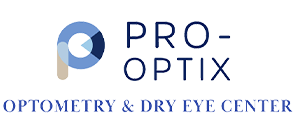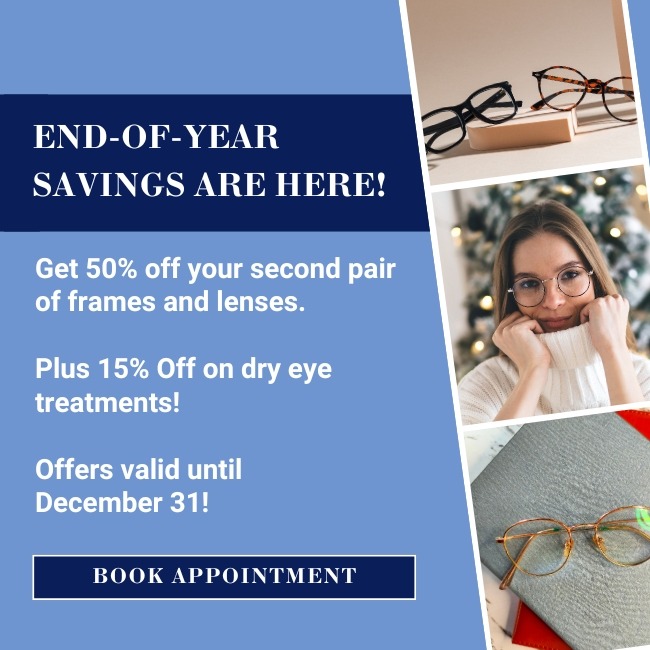Current studies estimate that almost 15% of Americans have been diagnosed with dry eyes, making this problem one of the most common conditions seen by your eye doctor. Your optometrist may tell you that the percentage of people suffering from dry eye disease is likely much higher, as some reports place the number of sufferers as high as 50%. If you have healthy eyes, your tears constantly coat the surface of the eye, called the cornea. When you blink, tears flow across the cornea, constantly lubricating and nourishing the cells of the surface of the eye. The tears protect the eye from irritants and help improve vision by focusing light.
If you suffer from dry eyes, the symptoms may range from tired, red, or gritty feeling eyes to excessive watering, light sensitivity, blurry vision, and the inability to wear contact lenses. Dry eye issues have been linked to environmental causes such as air conditioning, the use of fans, extended screen time, exposure to smoking, and weather-related conditions such as low humidity, dry climates, and windy conditions. It can also be triggered by various medications or be a side effect of chronic conditions such as rheumatoid arthritis, lupus, Sjogren’s syndrome, or diabetes. It’s also much more prevalent as we age.
Many people with dry eye disease experience issues due to blockage of the Meibomian glands. These tiny glands are located along the edges of the eyelids, where the eyelashes are found. They produce an oil that is a vital part of the tears that protect your eyes. It is the main ingredient in the film that prevents tears from drying too quickly, which can cause the surface of the eye to lose vital moisture. A full vision exam can easily establish whether or not blockages in your Meibomian glands are contributing to dry eye disease.
Dry eye disease is a chronic, progressive condition, but several effective treatments are available to help control the condition and protect your eyes. One of the newest and most exciting options is low level light therapy, also called LLLT. This innovative therapy was originally developed by NASA as a way to grow plants in space, but over the years it’s been proven effective in treating many health issues, including dry eye disease. A specially designed mask is worn over the eyes, delivering LED light pulses that gently warm the eyelids. The blockages in the Meibomian glands dissolve during the light treatment, releasing the vital oils to help restore the delicate fluid balance of your tears.
This painless, relaxing procedure is done right in your eye doctor’s office and usually takes about 15 minutes. There is no recovery time; you can resume daily activities as soon as the treatment is completed. 85% of patients using LLLT therapy report improvement of their dry eye disease after the very first treatment! This safe, non-invasive procedure can be used by both adults and children, has no side effects, and may also help improve acne, rosacea, and small wrinkles around the eye area as well.
LLLT shows promise in resolving difficult cases of dry eye disease that have not responded well to other forms of treatment, and may also be combined with another type of light-based treatment called IPL for enhanced results. IPL (short for intense pulsed light) treatments focus on reducing inflammation and any bacterial involvement surrounding the eyes using flashes of bright light delivered by a hand-held device. This treatment has also been shown to be effective in treating Meibomian gland blockages.
When compared to other non-pharmaceutical dry eye treatments, LLLT is one of the most affordable ways to treat dry eye disease. The economic benefits of LLLT treatment make it a very popular choice, as it is not typically covered by vision plans or health insurance. Be sure to ask your optometrist about payment plans or special promotions for LLLT; many eye doctors are excited to be able to offer this breakthrough treatment to patients who have long suffered from dry eye disease!
If you think LLLT may be the solution to your eye discomfort, reach out to your favorite Houston eye doctor to schedule a vision test and a consultation to evaluate you for dry eye disease. At Pro-Optix Eye Care, we’re excited to be part of the solution to this widespread problem. Take the first step toward better eye health – call us today at 713-360-7095!





